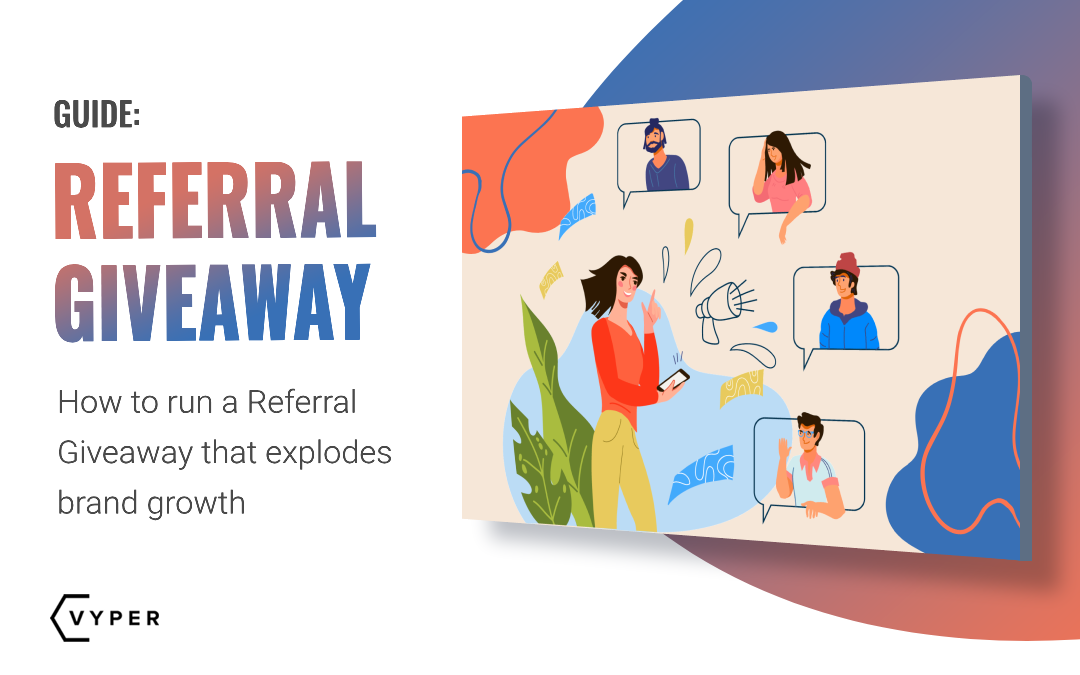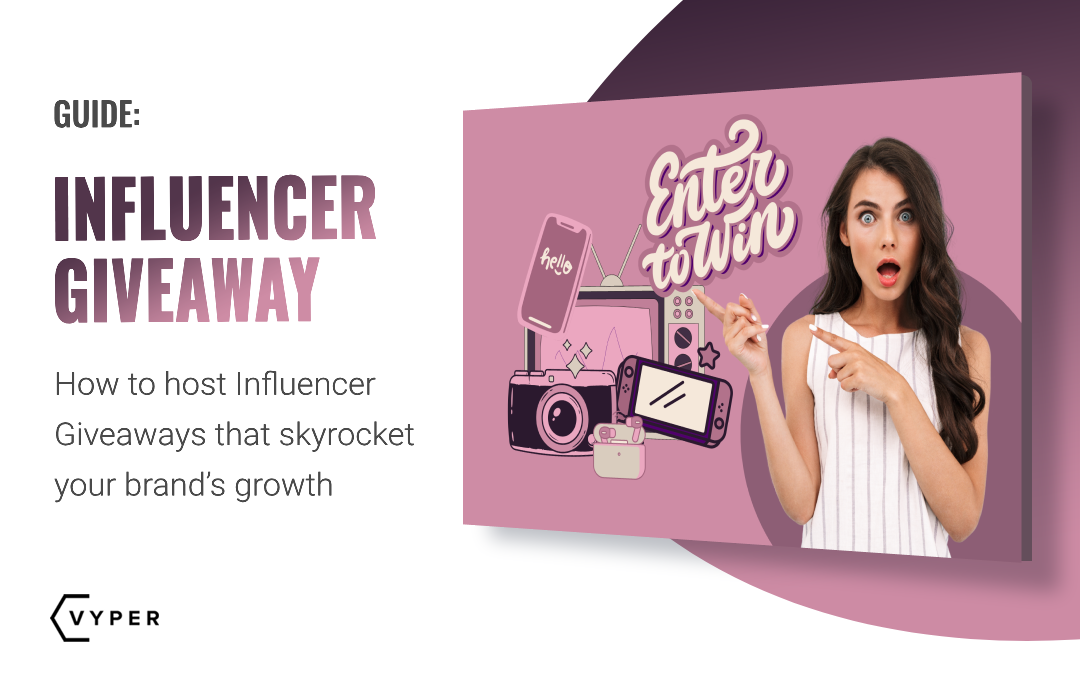“How to convert traffic into sales?” You probably typed this into Google a dozen times, only to be led to the same sort of advice that’s been around for the last decade.
Reality check! There have been drastic changes to the e-commerce landscape, with almost everyone owning online stores. This incredible rise in competition has forced brands to create new, innovative ways to get customers to buy their products.
We explore 8 of these innovative strategies on how to convert traffic into sales. If you have a steady flow of traffic to your website but need to find ways to boost those conversion rates, then this guide is for you.
Let’s get started!
- How to Convert Traffic into Sales
- Why Don’t Your Store Visitors Make a Purchase?
- 8 Ways to Turn Your Store Visitors into Paying Customers
- 1. Use Chatbots as Virtual Store Agents
- 2. Make the First Purchase Special
- 3. Transparent Returns Policy
- 4. Display Star Ratings & Reviews
- 5. Showcase Social Proof
- 6. Streamline Checkout Process
- 7. Retarget Abandoned Carts
- 8. Improve Your Page Loading Speed
- Bringing in Visitors and Keeping Them as Customers
- TL;DR: How to Convert Traffic into Sales

FREE DOWNLOAD: Get all Our Contest & Giveaway Marketing Guides, Checklists, and tutorials that have helped 100’s of brands collect 15k+ emails in under 21 days!
How to Convert Traffic into Sales
Nobody says NO to more website traffic. On the contrary, it is obvious the more traffic your website gets, the better it is for business.
Or is it so? What good can website traffic do if the visitors do not convert into paying customers? How to convert traffic into sales?
eCommerce is already plagued with countless challenges. For example, the average eCommerce website bounce rate hovers from 20% to 45% (Hotjar). In other words, close to half of the website visitors landing on the website or product leave before taking any action.
This makes it necessary to spruce up your eCommerce website’s conversion rate. Conversion rate is the measure of website visitors who buy from your store. According to Smart Insights, the average conversion rate across several countries is roughly 1.5%.

Why Don’t Your Store Visitors Make a Purchase?
Phrased differently, why do eCommerce websites have such a low conversion rate? Five top reasons can be attributed to this low conversion rate.
- Security concerns – Customers are wary of submitting their personal information like contact, location, credit card numbers, etc., which might be misused or even stolen by cybercriminals.
- Lack of product detail – The individual product page does not offer accurate details about the dimensions, specifications, or similar information that the user might need before making a purchase decision.
- Difficult store navigation – A complicated store layout makes it difficult to find products, explore near alternatives, and complete the purchase.
- Complicated checkout process – A long, winding checkout process that asks too many details, often repetitive, could make an already sitting-on-the-fence customer abandon the purchase.
- Difficult product comparison – Insufficient or lack of product comparisons makes the customer skeptical of the current choice.

8 Ways to Turn Your Store Visitors into Paying Customers
Your website is mobile-friendly, and your content is optimized for search engines. However, there is no guarantee that your website visitors would become paying customers.
There are some strategies that one must put in place to make website visitors become paying customers. We know this from the challenges discussed above.
Despite these challenges, some ways can make your store visitors into compulsive shoppers. These strategies can help with that.
- Use chatbots as virtual store agents
- Make the first purchase special
- Transparent returns policy
- Display star ratings & reviews
- Showcase social proof
- Streamline checkout process
- Retarget cart abandons
- Improve your page loading speed
1. Use Chatbots as Virtual Store Agents
No matter how hard you try, it isn’t easy to replicate an in-store sales agent’s warm smile and service. The hospitality is too personal and cannot be replicated virtually. However, chatbots can come close to providing that service. Also, they can do better than human store assistants in helping customers find the product they are looking for and making a quick purchase.
In April 2016, at their F8 conference, Facebook first introduced the concept of Bots for the Messenger platform. It kicked off a trend of using chatbots in every digital platform possible for offering customer service. For example, online stores relied on human agents until then switched to chatbots to drive visitor engagement and conversions.
Chatbots on an online store can go beyond helping customers find canned responses to frequently asked questions. AI-enabled chatbots can also give product recommendations and suggestions to help website visitors make a quick purchase. All this without having to scour the store for the product that they are looking for.
Here is how Nordstorm’s chatbot helps website visitors find the right products that they are planning to buy:

2. Make the First Purchase Special
First impressions last; they certainly do in the eCommerce space. Online shopping is trying to make the in-store shopping experience. So, it’s natural for customers to expect convenience and benefits beyond shopping on the go from their mobile devices.
The first purchase that customers make from your store has great potential to build a future relationship. Website visitors who may not be keen about making a purchase can be persuaded to make the first purchase with incentives. These incentives can take several forms:
- Promo codes
- Discount coupons
- Free shipping
- Contests
- Discount on next purchase, etc.
Here is a pop-up from DODOcase that gives first-time buyers a 15% off.

Similarly, you can also experiment with other incentives for first-time buyers like gifts, expedited shipping, exclusive social offers (follow us to get a discount), etc.
The motive of all these incentives is to motivate the random website visitor into planning and making an impromptu purchase.
3. Transparent Returns Policy
There are three vital statistics that online store owners must be aware of:
- Only 58% of customers are satisfied with the ease of making online returns.
- 63% of US consumers check the returns policy before making a purchase.
- 48% of shoppers would shop more with retailers that offer hassle-free returns.

This mandates that the store have a transparent returns policy that website visitors can easily access and understand before making a purchase.
There is no mandate that the returns policy has to be elaborate like a legal tender document. However, you can present the broad process of returns in an easy-to-understand copy.
In most cases, online shoppers want to know whether the store accepts returns and whether the store would bear the cost of the courier service. Once this information is given, getting them to make a purchase is easy.
4. Display Star Ratings & Reviews
If you have made at least one online purchase until now, you must have seen the star ratings and text reviews that accompany most products. These are user-generated reviews that strive to showcase the pros and cons of the product.
The star reviews measure the product’s goodness on a scale of 1 to 5 with stars. In addition, text reviews give comprehensive feedback about the pros and cons of the user’s own language.

These star ratings and reviews go a long way in helping a first-time buyer make the purchase. It dispels any doubt or questions that they have about the product. It is not surprising that successful online stores like Amazon also display product images uploaded by customers.
This helps cement a positive feeling in the user’s mind about the store and make an informed decision. This is typically true in the case of first-time buyers who are highly skeptical before completing the transaction.
5. Showcase Social Proof
Although most shopping has moved online, one aspect of shopping has not changed to date. It is the power of social proof.
Social proof is a concept that psychologist Robert Cialdini wrote about in his book “Influence: Science and Practice.” According to Robert, “we view a behavior as more correct in a given situation to the degree that we see others performing it.”
Phrased differently, most users and we, as individuals, follow the majority when decision-making.
From the eCommerce perspective, this can work in favor of businesses. It is easier to persuade customers to purchase when they can see others like them are making the same purchase. This is the power of social proof.
There are several other reasons why social proof helps in selling easier:

Your customers can become your greatest advocates and they could promote your brand in their circles. Additionally, you can provide your products as gifts to Instagram influencers and get their honest opinions about them too.
When they put up posts about your products on Instagram, their followers will notice your brand and might buy from you.
However, this method can only work if you’ve partnered with the right influencers. For that, you should leverage an analytics tool to track fake followers of these influencers. You must partner only with those influencers who have genuine followers.
There are several other reasons why social proof helps in selling easier: “

Want to learn more about social proof?
Click here to learn more about our 10 social proof strategies to better improve sales conversions.
6. Streamline Checkout Process
Guess where most of the cart abandonments happen in an online store? The checkout page. The checkout page is the last stage in the user’s journey, where the customer does the final act of making the payment to complete the transaction.
Unfortunately, most online stores have a complex checkout process that makes them abandon the cart. For instance, 34% of customers abandon carts to open an account to complete the transaction.
Similarly, if the checkout page takes more than 3 seconds to load, cart abandons are sure to ensue. As a result, many SMB now uses integration tools to connect Shopify and Stripe or other popular products to rule out the tiring payment processes.

This makes it necessary to streamline the checkout process. The checkout process must be minimal, hassle-free, and as swift as it could be.
Here are some points that could help you streamline your checkout process:
- Eliminate unnecessary optional fields
- Fasten the checkout page loading speed
- Display security symbols that bolster the trustworthiness
- Save customer details that might be required for future transactions
All this could help your online store convert your website visitors into paying customers rather than become shopping cart abandons.
It is recommended that you follow the single-page checkout process that most successful online retailers, including Amazon, have adopted. A single-page checkout is a one-page layout encompassing all the necessary elements like shipping address, payment methods such as debit and credit card payments, etc., on a single page.
It spares the users from inserting repeated vital information that they might have submitted while signing up. In addition, single-page checkout ensures that the checkout process is seamless and does not give any room for cart abandonment.
7. Retarget Abandoned Carts
This makes it necessary to streamline the checkout process. The checkout process must be minimal, hassle-free, and as swift as it could be.
Here are some points that could help you streamline your checkout process:
- Eliminate unnecessary optional fields
- Fasten the checkout page loading speed
- Display security symbols that bolster the trustworthiness
- Save customer details that might be required for future transactions
All this could help your online store convert your website visitors into paying customers rather than become shopping cart abandons.
It is recommended that you follow the single-page checkout process that most successful online retailers, including Amazon, have adopted. A single-page checkout is a one-page layout encompassing all the necessary elements like shipping address, payment options, etc., on a single page.
It spares the users from inserting repeated vital information that they might have submitted while signing up. In addition, single-page checkout ensures that the checkout process is seamless and does not give any room for cart abandonment.

8. Improve Your Page Loading Speed
Websites take time to load, especially when they have many applications and integrations running in the back-end. However, if they take too long to load, it could cause website visitors to leave the website sooner than they came.

As important as creating an impressive website experience, it is equally important to improve the page loading speed. Google and other search engines recommend a three-second window as the ideal page loading speed.
Be it your online store or any other website. There are several ways to improve page load speeds:
- Use lazy image loading
- Remove heavy image and video files
- Run only essential integrations
- Write minimal code to reduce processing speed
These tactics can help improve the page loading speed and keep visitors browsing the store for longer. Further, a fast-loading website will also rank higher in search engine rankings.

Looking to launch an e-commerce website? We have some excellent tips on making the most of those challenging early stages of your online store.
Click here for 7 Vital Steps To Launching A Wildly Successful eCommerce Store.
Bringing in Visitors and Keeping Them as Customers
Bringing visitors to a website is half the battle. How to convert traffic into sales is another battle of its own. The biggest challenge is in delivering an optimal user experience when they land on the website. This requires that the website layout is designed to make product discovery more straightforward and effortless. Next, there should be minimal friction in adding the products to the cart and completing the transaction. In between these two points, several user experience aspects need refinement to maximize sales.
This includes providing real-time support with the help of live chat. A live chat software or an AI-based chatbot ensures that the visitor can find relevant information necessary before making a purchase. Next, use special promo codes and offers to make the first transaction special for the customer. The positive experience of the first transaction can go a long way in building a solid relationship with the customer.
TL;DR: How to Convert Traffic into Sales
At each product page and checkout page, social proof and security symbols can go a long way in winning the customers. These symbols instill confidence in the customer that they are making the right choice of buying from the store.
Despite the best efforts, some website visitors may not complete the first transaction or choose to abandon the cart. To win back such customers, you can always resort to retargeting ads. Retargeting ads can reach out to customers across top websites that they visit, social media channels that they frequent, and remind them of the brand through email marketing.
With all these tactics, it should not be difficult to figure out how to convert traffic into sales.
Tell us, what are your favorite strategies for boosting your website conversion rates?

About the Author
Author’s Bio: Srushti Shah is an ambitious, passionate, and out-of-the-box thinking woman having a vast exposure in Digital Marketing. She is working as a Digital Marketer and Content writer at Acquire. Her key focus is to serve her clients with the latest innovation in her field, leading to fast and effective results. Working beyond expectations and delivering the best possible results is her professional motto. Other than work, she loves traveling, exploring new things, and spending quality time with family. Reach out to Srushti Shah on Twitter or LinkedIn
Jack Paxton is the co-founder of VYPER, a marketing tool that helps brands build email lists, social followings, and revenue using viral giveaways, referral, and reward programs. After millions of dollars spent testing different marketing strategies at his marketing agency. He then also co-founded Hyax a fast, conversion & design-focused course and funnel builder for creators.




This article is really very interesting and effective. Hoping to get more such helpful articles.
Keep it up and update more articles here.
Thank you!
Great Post Guys, this is such a complete guide! I’m definitely going to pass it on!
Thank you!